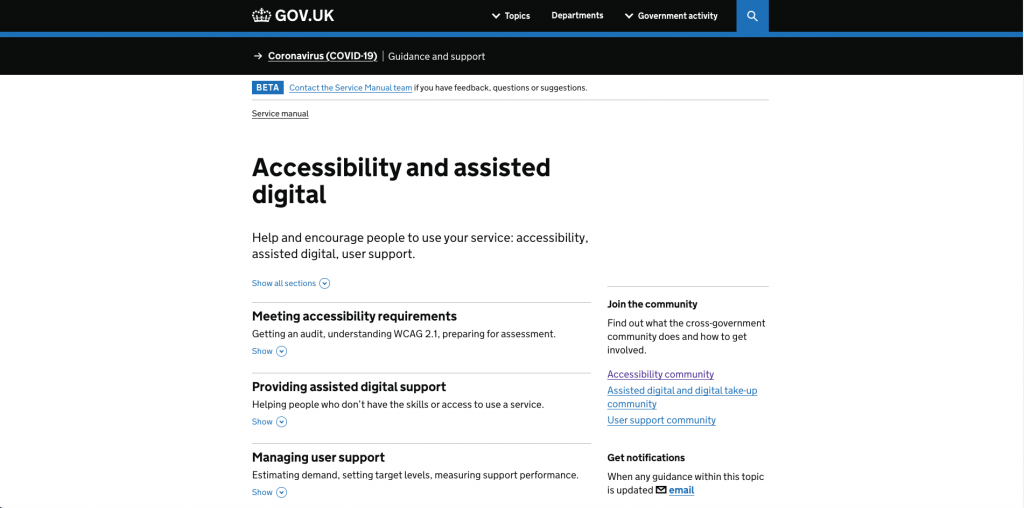
I recently did some research into digital accessibility to explore how we can strengthen our work in this area.
While we all definitely appreciate the importance of ensuring that digital services are accessible to all users, I think there was a growing sense in the team that we could be doing more. The GDS Service Manual felt like the obvious place to start.

This was really helpful for getting a sense of what is expected in relation to accessibility throughout the different stages of creating a digital service. However, I also wanted to see how other people were addressing this directly in their work.
There’s so much information on digital accessibility that it’s almost overwhelming and it can be a little difficult to know where to start. Resources that I found particularly helpful include AbilityNet and The Big Hack, and the GDS Accessibility blog.
After working my way through what I’d found, I was able to identify different ways in which we could be doing more around accessibility. This resulted in three key actions:
- Brush up on our knowledge. Using the resources I found while looking into accessibility, I’ve put together a reading list which we’re all now working our way through.
- Do more research with users with access needs. We’re now making more of an effort to prioritise speaking to users with access needs. One way we’re doing this is to include questions about access needs in our recruitment surveys, giving users the options to disclose any access needs they have. As part of this, we’re also trying to make our research activities more accessible, by asking users if they need us to make any adjustments so that they can take part.
- Complete an inclusivity assessment as part of future Discovery projects. Something that is continually emphasised by people working in this area is the importance of thinking about accessibility at an early stage. We’ll therefore be including a section about this in future Discovery reports, calling out any specific accessibility or assisted digital related challenges for that particular service or group of users.
But I think the most important thing to take away from this is that while we now have some specific actions to take around accessibility, that doesn’t mean that this work is finished. This is something that we need to keep coming back to so that it automatically becomes part of what we do.





